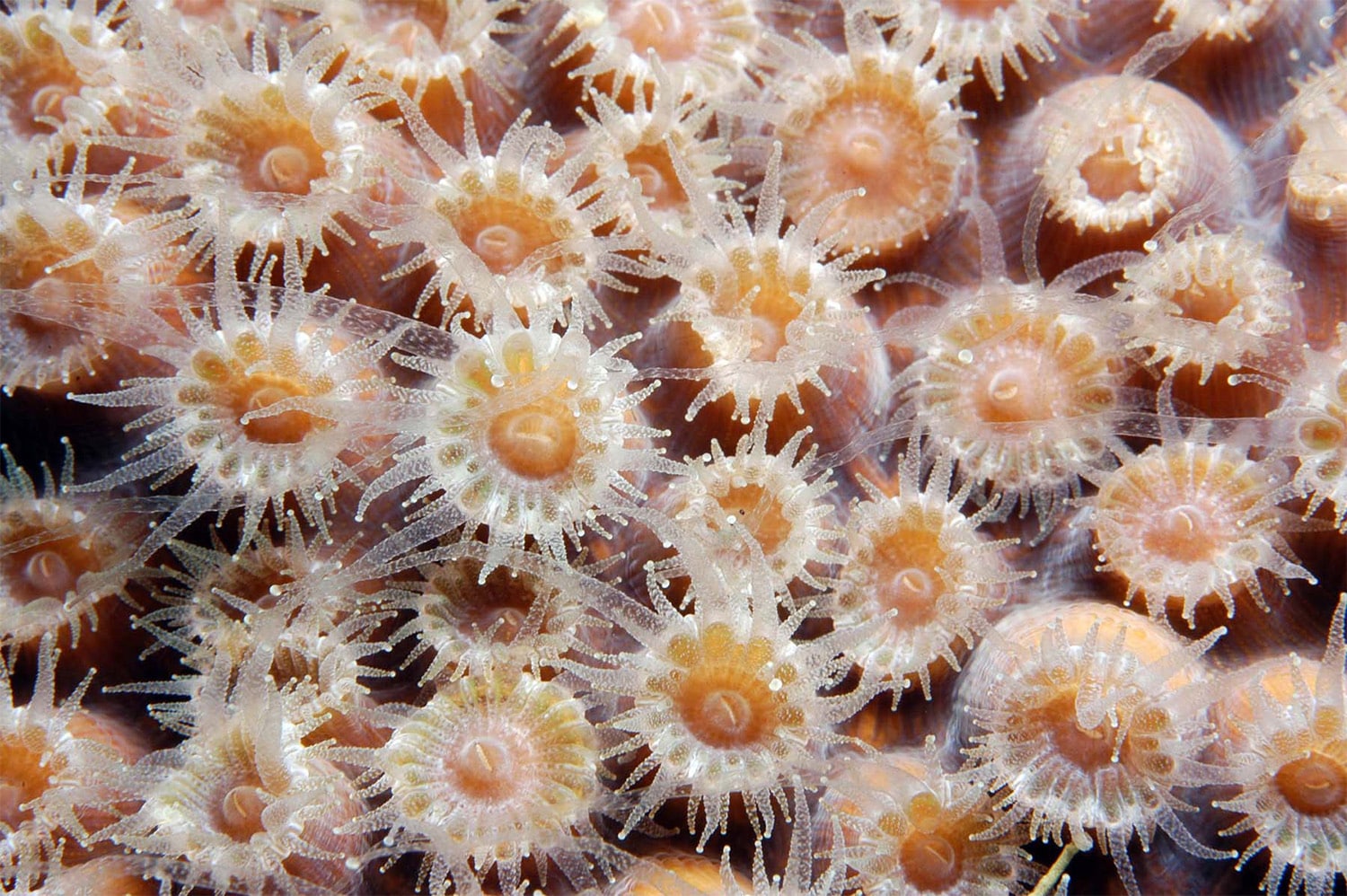
35 interesting facts about coral
- 👁️ 324
Coral reefs are among the most diverse and biologically complex ecosystems on earth, often referred to as the “rainforests of the sea.” Located predominantly in tropical and subtropical waters, these vibrant underwater landscapes are not only a spectacle of color and life but also play a crucial role in the marine environment. Corals are not plants but living organisms belonging to a group known as Cnidaria, which also includes jellyfish and sea anemones. These fascinating creatures engage in a symbiotic relationship with algae called zooxanthellae, which provide them with food generated through photosynthesis. As the foundation of the reef ecosystem, corals support an incredible diversity of life, offering shelter, food, and breeding grounds for countless marine species. Here are thirty-five interesting and informative facts about coral that showcase their importance, beauty, and the challenges they face.
- Coral is made up of tiny animals called polyps, which secrete calcium carbonate to form a hard skeleton.
- A single coral polyp can be as tiny as a pinhead or as large as a foot in diameter.
- Most corals contain photosynthetic algae, zooxanthellae, which live inside their tissues and provide the corals with food through photosynthesis.
- Coral reefs grow best in warm, shallow, clear, sunny, and agitated waters.
- They typically grow at depths less than 50 meters in tropical and subtropical waters.
- There are two main types of coral, hard coral and soft coral. Hard corals build the calcium carbonate structure of coral reefs, while soft corals do not.
- The Great Barrier Reef, located in Australia, is the world’s largest coral reef system and can be seen from space.
- Coral reefs support approximately 25% of all marine species, despite occupying less than 1% of the ocean floor.
- Coral polyps have a mouth surrounded by tentacles; these tentacles can sting and are used to capture food.
- The color of coral comes from the zooxanthellae algae living inside their tissues.
- Coral reefs provide protection and shelter for many marine organisms.
- Bleaching occurs when corals under stress, such as from increased water temperatures, expel their algal cells and turn white.
- Although bleached corals are not dead, they are at a higher risk of dying from disease and starvation.
- Coral reefs act as natural barriers that protect coastlines from the effects of tropical storms and erosion.
- Overfishing, destructive fishing practices, pollution, warming, and acidifying oceans are major threats to coral reefs.
- Coral reefs provide important substances for new medicines, including treatments for cancer, arthritis, human bacterial infections, and Alzheimer’s disease.
- A quarter of coral reefs worldwide are considered damaged beyond repair, with another two-thirds under serious threat.
- Coral reefs have been around for about 500 million years.
- Coral reefs are very slow growing; some reefs have been growing for 5,000 to 10,000 years.
- It is estimated that people receive economic benefits of $29.8 billion annually from coral reefs in goods and services.
- The process of new corals starting on a reef is known as coral recruitment.
- Coral spawning is a significant event where many coral species release eggs and sperm into the water en masse.
- Coral diseases often spread during coral bleaching events due to reduced resistance of stressed corals and increased pathogen abundance.
- Coral polyps feed on a variety of small organisms, from microscopic zooplankton to small fish.
- The mutual relationship between coral and zooxanthellae is so close that the corals cannot live without the algae, and the algae cannot live without coral.
- Coral reefs are sometimes called the “medicine cabinets” of the 21st century due to their potential in medicine development.
- Climate change is the greatest global threat to coral reef ecosystems, primarily due to increased temperatures and ocean acidification.
- Coral calcification rates decrease as ocean acidification increases.
- Some coral species are nocturnal, with polyps that come out to feed at night.
- Coral can reproduce asexually, by budding new polyps, or sexually, by spawning.
- Parrotfish play a crucial role in maintaining the health of coral reefs by eating algae that can choke corals.
- Coral reefs have been used as important navigation markers for as long as humans have sailed the seas.
- Manta rays are one of the larger species that frequent coral reefs, where they come to be cleaned by smaller fish.
- Coral reefs are often referred to as “canaries in the coal mine,” indicating the health of the global marine environment.
- UNESCO’s World Heritage Centre lists several coral reefs as World Heritage Sites, recognizing their outstanding universal value and encouraging their protection.
Coral reefs are not only vital to the health of the ocean but also to human society, offering millions of jobs through fishing, tourism, and medicine. They protect our shorelines, support our economies, and provide a home for countless species. However, these ecosystems face severe threats from human activity and climate change. The protection and preservation of coral reefs are essential for maintaining the biodiversity of our planet and the health of our ocean ecosystems. Through education, conservation efforts, and sustainable practices, we can help ensure that these vibrant ecosystems survive for future generations to witness and enjoy.
Coral reefs are among the most diverse and biologically complex ecosystems on earth, often referred to as the “rainforests of the sea.” Located predominantly in tropical and subtropical waters, these vibrant underwater landscapes are not only a spectacle of color and life but also play a crucial role in the…